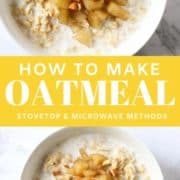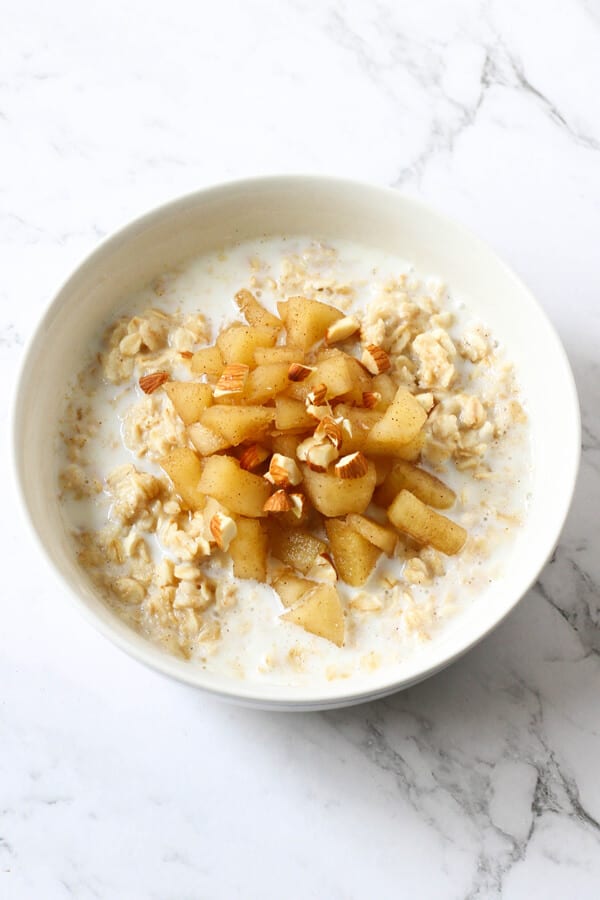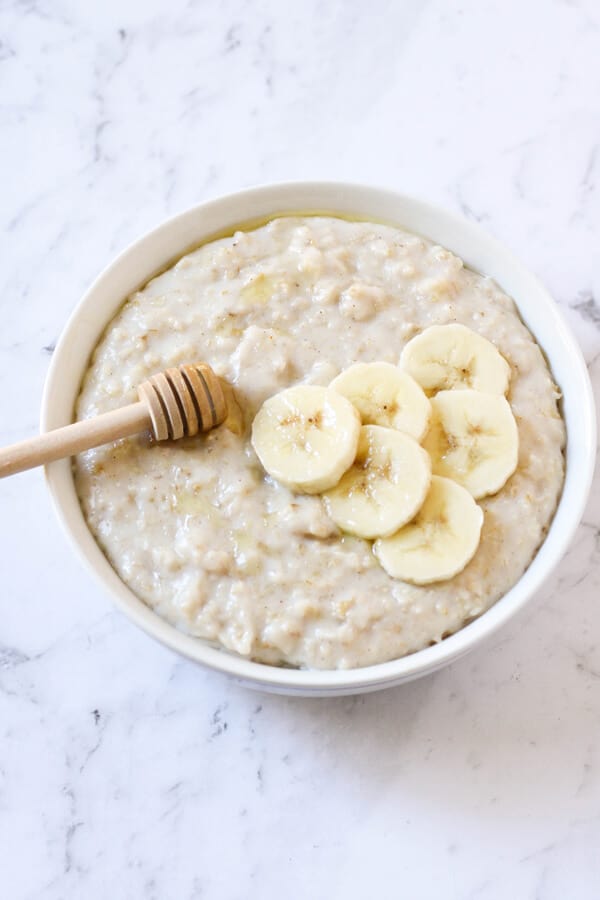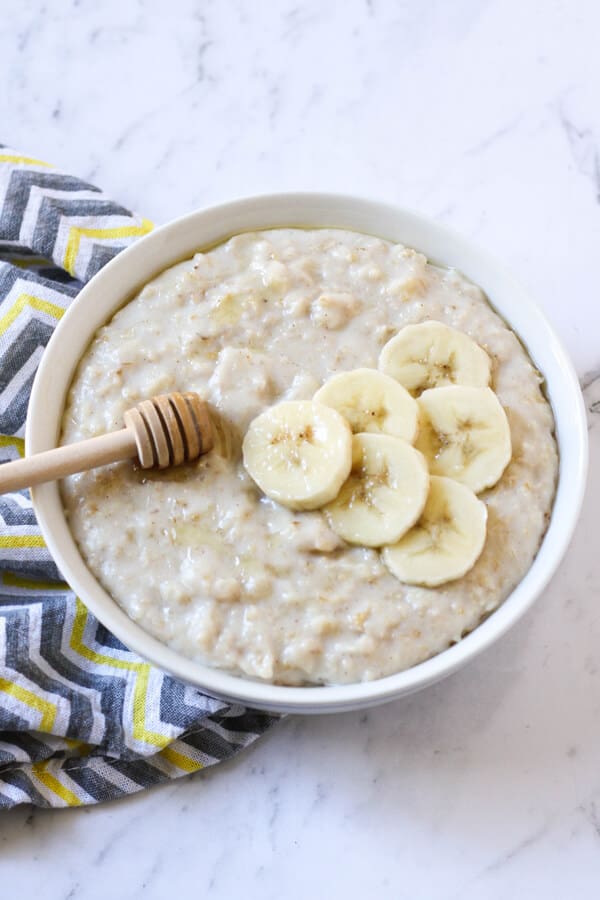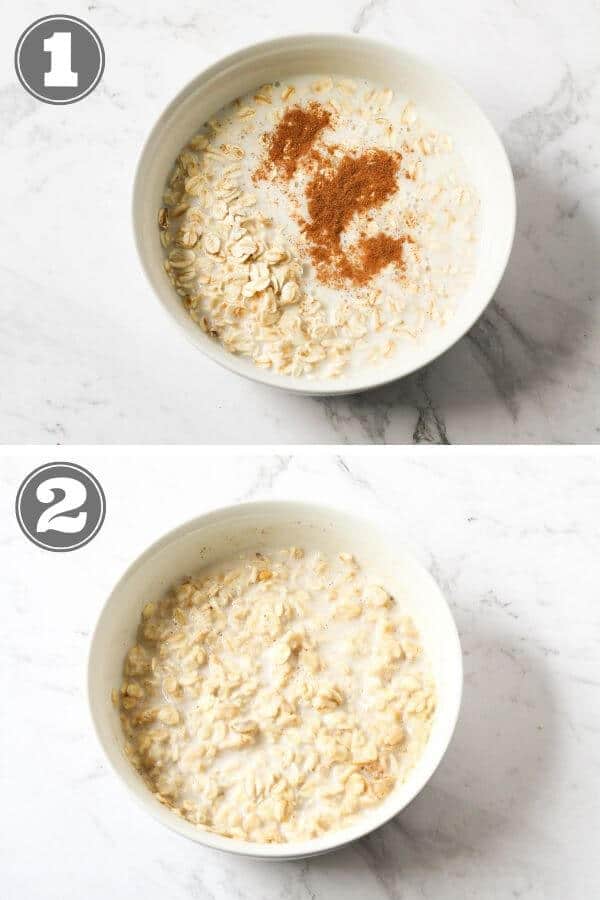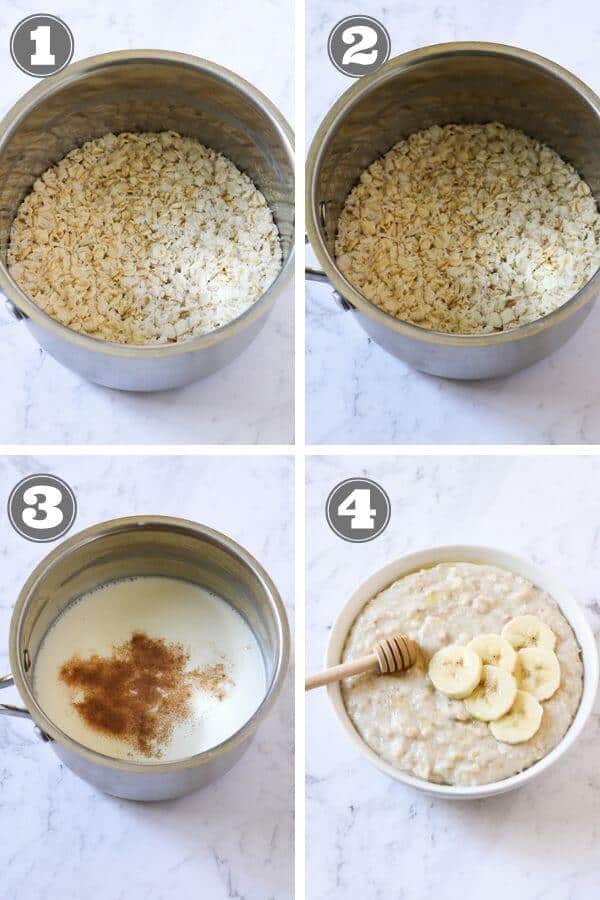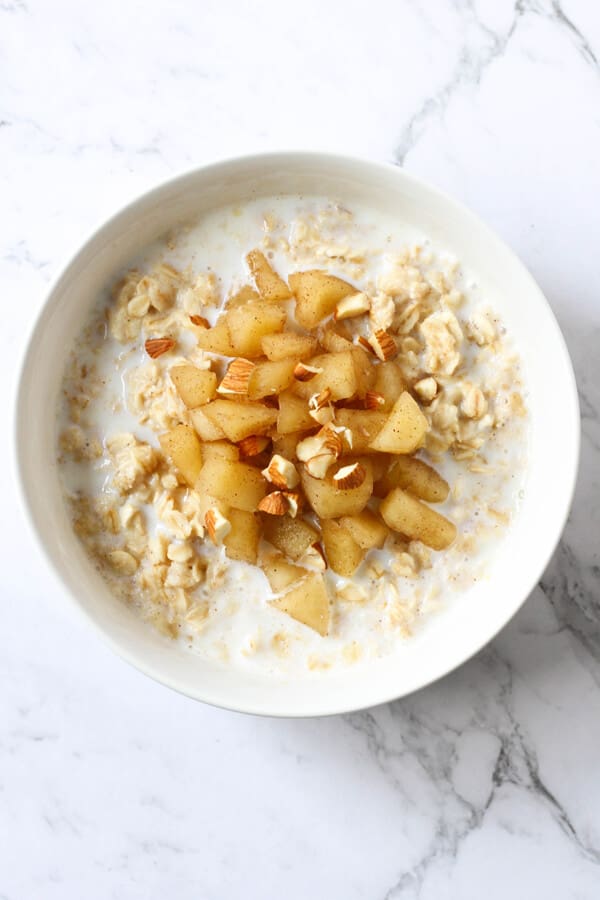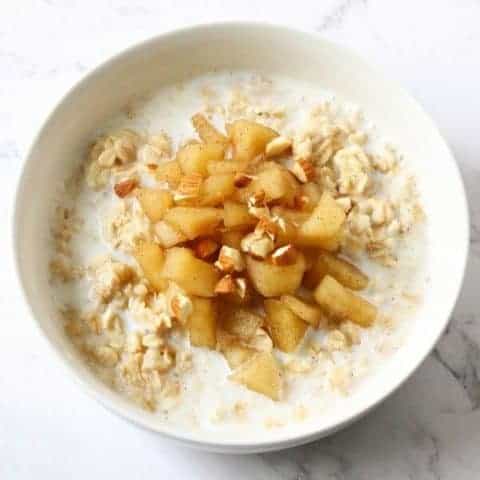Looking to start each day with a delicious and warming bowl of oatmeal? You’ve come to the right place! This is the only guide you’ll ever need to learn how to make oatmeal perfect every time. We eat oatmeal for breakfast almost every day in our house. It’s quick and easy to prepare, and it’s especially great on those cold winter mornings when you need a hot breakfast. Oats are also healthy and hearty, keeping you full for hours. I find I rarely snack before lunch after I’ve had a bowl of oats for breakfast. Whether you make your oatmeal on the stovetop or in the microwave, it will be ready in mere minutes. Stovetop is my preferred method, as I find they are a little softer and less chewy. But the microwave is great in a pinch, or if you need a quick breakfast to take to work. The best part about oats is that they are so easy to customise. Try adding in a different combination of toppings everyday to mix things up.
The difference between old fashioned, quick and steel cut oats
Ever stood in the breakfast cereal aisle and wondered what on earth the difference was between all these types of oats? Well it’s your lucky day. Let’s break it down quickly… Old Fashioned or Rolled Oats are processed by first steaming the whole oat groat then flattening or rolling it to give it it’s round oval shape. This makes them quicker to cook, and rolled oats also tend to hold their shape when cooked. Steel-Cut Oats are processed by chopping the whole oat groat into several pieces with a steel blade. They take the longest to cook, and generally have a nuttier flavour and are chewier than the other varieties. Quick or Instant Oats are the most processed. They are partially cooked and dried, then rolled and pressed thinner than rolled oats to allow them to cook faster. The best type of oats to use for both stovetop and microwave oatmeal is old fashioned or rolled oats. Steel cut oats are great when you have a bit of extra time on your hands (try these Banana Maple Steel-Cut Oats).
What you need to make oatmeal
Making oatmeal couldn’t be simpler. Old fashioned or rolled oats are a must - as we discussed above, they are the best for these methods of cooking. You’ll also need milk but feel free to choose your favourite here. Dairy, almond, coconut etc all work, and it just depends on your preference. Last but not least is cinnamon. This is technically optional but a dash of cinnamon really helps flavour the oats and I find you need less sweetener when you’ve added some cinnamon to the mix.
Is it better to make oatmeal with milk or water?
I’m so glad you asked. Always use milk for oats! Some people use water instead of milk but those people are wrong. Water makes oats gummy instead of creamy, and there’s nothing more sad than water-logged and flavourless oatmeal. The only exception here is that we soak our oats in boiling water overnight for the stovetop method below. Pre-soaking the oats helps make them creamier, but they are still finished off with milk. Always use milk!
How to make oatmeal in the microwave - step by step
Place ½ cup of oats, ½ cup of milk & ½ teaspoon cinnamon in a microwave safe bowl (photo 1) and stir to combine. Place in the microwave on high for 90 seconds, stir, then cook for another 30 seconds until the oatmeal is puffed and softened (photo 2). Add more milk, if desired, and your favourite toppings to serve.
How to make oatmeal on the stovetop - step by step
Place ½ cup of oats and ½ cup of boiling water into a saucepan, cover with the lid and leave to soak overnight (photos 1 & 2). In the morning, add ½ cup of milk and 1 teaspoon cinnamon to the saucepan and stir to combine (photo 3). Bring to boil, then reduce heat and simmer until the oats are soft and most of the liquid has been absorbed, approx. 5 minutes. Add more milk, if desired, and your favourite toppings to serve (photo 4).
Oatmeal Toppings
Now for the best part of oatmeal - the toppings! There are endless ways to top your oatmeal. I’ve listed a bunch of popular options below, so feel free to mix and match.
Honey, Maple Syrup or Rice Malt / Brown Rice Syrup. Brown or raw sugar. Sliced fruit - bananas, strawberries, mango etc. Stewed Cinnamon Apples (pictured above) Crushed nuts - almond, walnuts, pecans etc. Nut Butter - peanut butter, almond butter etc. Shredded coconut. Mini chocolate chips.
Can you make oatmeal and reheat it?
Absolutely. Feel free to make up a big batch of oatmeal to portion out for the week. Leftover oatmeal can be stored in an airtight container in the fridge for up to 4 days. You can then reheat either in the microwave or on the stovetop, just be sure to add a dash or two of milk when you do as it is likely the oats will have absorbed majority of the liquid.
Tips on How to Make the Best Oatmeal
Use old fashioned / rolled oats, not quick oats. Always soak your oats overnight if you are making them via the stovetop method. Add a dash of cinnamon - it creates more flavour.
More Breakfast Recipes
Apple Cinnamon Oatmeal Healthy Overnight Oats Banana Maple Steel Cut Oats Crispy Breakfast Potatoes Healthy Banana Pancakes Easy Stovetop Banana Oatmeal OR see all Breakfast Recipes
TIPS FOR MAKING THE BEST OATMEAL:
Use old fashioned / rolled oats, not quick oats. Always soak your oats overnight if you are making them via the stovetop method. Add a dash of cinnamon - it creates more flavour.
STORING & REHEATING YOUR OATMEAL:
Store in an airtight container in the fridge for up to 4 days. Reheat either on the stove or in the microwave, adding in a dash of milk as most of the liquid will be absorbed during storing.
